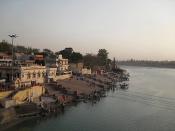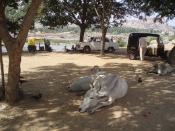In every region of the world there are culture and social differences that set countries apart. Each with an economic, social and political outlooks on the future that determine the way people live. These endless arrays, even occur in different parts of a particular of every country including one of the worlds most diverse, India.
India is separated into 25 states and 7 territories which create 16 major languages and 1,000 minor languages and dialects. This diversity in language creates somewhat of a barrier for India to become one of the foremost leaders in world because of the lack of unity. Although, in the past, the India government has taken steps to correct this matter with promoting Hindi as the national language. However, Indians who cannot speak Hindi frowned upon this notion. They believed the best jobs would go to Indians who spoke Hindi and with their pride of their regional languages kept them from accepting this unity, thus government decided against this idea.
Now, the India government recognizes 13 regional languages as official languages. Children in schools learn Hindi as their second language, with English being used primary in higher education.
Education has become the most recognizable forms of advancing one's country, India has exploded in schools and enrollment in these schools. As we can see by page 2, both chart's, the difference in a little more then 10 years is considerable. Both school enrollment and the number of educational institutions have increased by an average of 63%, however do not get fooled by these numbers. The Indian's school system are extremely overcrowded and many children drop out to get a job to help support their families.
This problem with India's educational system falls in two parts, the first being that children who do drop out to find a...



Info regarding innovation in India
New Scientist recently published an article in its series on globalisation. It gave some interesting examples how innovation was affecting rural life in India. India is a country separated by it's caste system. This has lead a lot of innovation programs and funding to be misallocated. The rich get the money and don't want to share. Essantially, just introducing a few computers and the internet to a local fishing village, had the effect of providing navigational advice, etc to aid their main economy. Since it was so successful they introduced this to several other villages and formed networks. Since a lot of them don't speak english, they adopted a querty-keyboard to their local hindi, enabling them to communicate. This is innovation on a small scale, but shows the potential that lies within the indian people. see more at wwww.newscientist.com
6 out of 8 people found this comment useful.